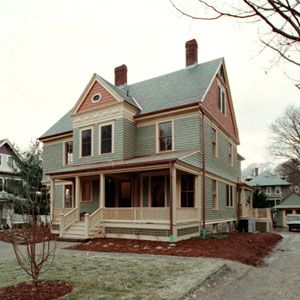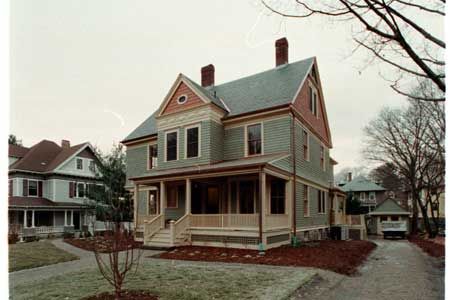
Too often, remodelers rampage through a house like an invading army, sledgehammering and crowbarring until only the shell remains. “It’s easier to rip out the old stuff, trash it and bring in new materials that are straight and simple,” says This Old House contractor Tom Silva. “But it’s not smart.”
So at the TV show’s project in Watertown, Massachusetts, Tom and his crew gingerly removed trim, doors, plumbing fixtures, floorboards and other reusable accoutrements, caching everything in the two front
parlors to await reinstallation. Because the house’s floor plan is being radically revamped, these items could not be left in place. Still, Tom’s experienced eye noted that they were too lovely, useful or valuable to pitch. Stashing and reusing, Tom says, makes sense for any major remodeling project. “There is no reason to fill landfills with this
stuff if you can find another place for it within the house. In all of
our jobs, we’re always looking to reuse anything we can.”
Stepping into the south parlor, Tom surveys a trove of finish
materials—baseboard trim and crown moulding—that he took particular care to save. “It’s not just a question of historic charm and beauty,” he says, waving a hand at a pile of fluted molding stacked like cordwood. “You need to think about ease of duplication. If you save it, you don’t have to worry about having unmatched products in your house.”
Tom says old doors with four or six panels are “almost always worth
saving. Sometimes you can get lucky and find an old door buried inside a
wall, in beautiful condition.” At the project house, he collected 14
original poplar, pine and oak doors including some made of quartersawn oak. (Quartersawing reveals only narrow, uniform growth rings and renders wood less likely to warp.) “I like to collect as many doors as I can, because-when it comes time to rehang-you need one that fits and swings open the right way.”
Reusing most building materials can save lots of money, but in the case
of doors that’s seldom true. “If you’re thinking you’re going to save money by salvaging an old door, dream on,” says Tom. By the time a carpenter and painter finish stripping, tightening, trimming, painting, reinstalling hardware and hanging an old door, it would be cheaper to buy a new door.
Even materials buried in the walls or floor catch Tom’s attention. Old
studs-usually an honest 2 by 4 inches versus today’s 1½ by 3½ are ideal for patching old-house walls. “If you move a door or cut a window opening bigger, it’s a lot easier if you can fill in using materials that are the same dimension.” Tom often pulls up wide pine boards originally used as subfloor, promoting them to lustrous finish flooring elsewhere.
While each dismantling job is unique, Tom’s rule of thumb is that an item should be removed by working in the reverse order from the way the piece was installed. In the case of a fireplace surround, for example, the baseboard trim should come off first because it was installed last.
If the material will be visible when it is reinstalled, Tom likes to free it with a reciprocating saw fitted with a nail-cutting blade because prying often leads to splits and dents. For wood that needs to be cut or planed to fit its new home, Tom advises caution. Old wood is a minefield of nails. “We inspect every piece very carefully for nails before we work on it,” he says. “It’s a safety issue. At the very least, hitting an old, brittle cast-iron nail really does a number on your blades.”

